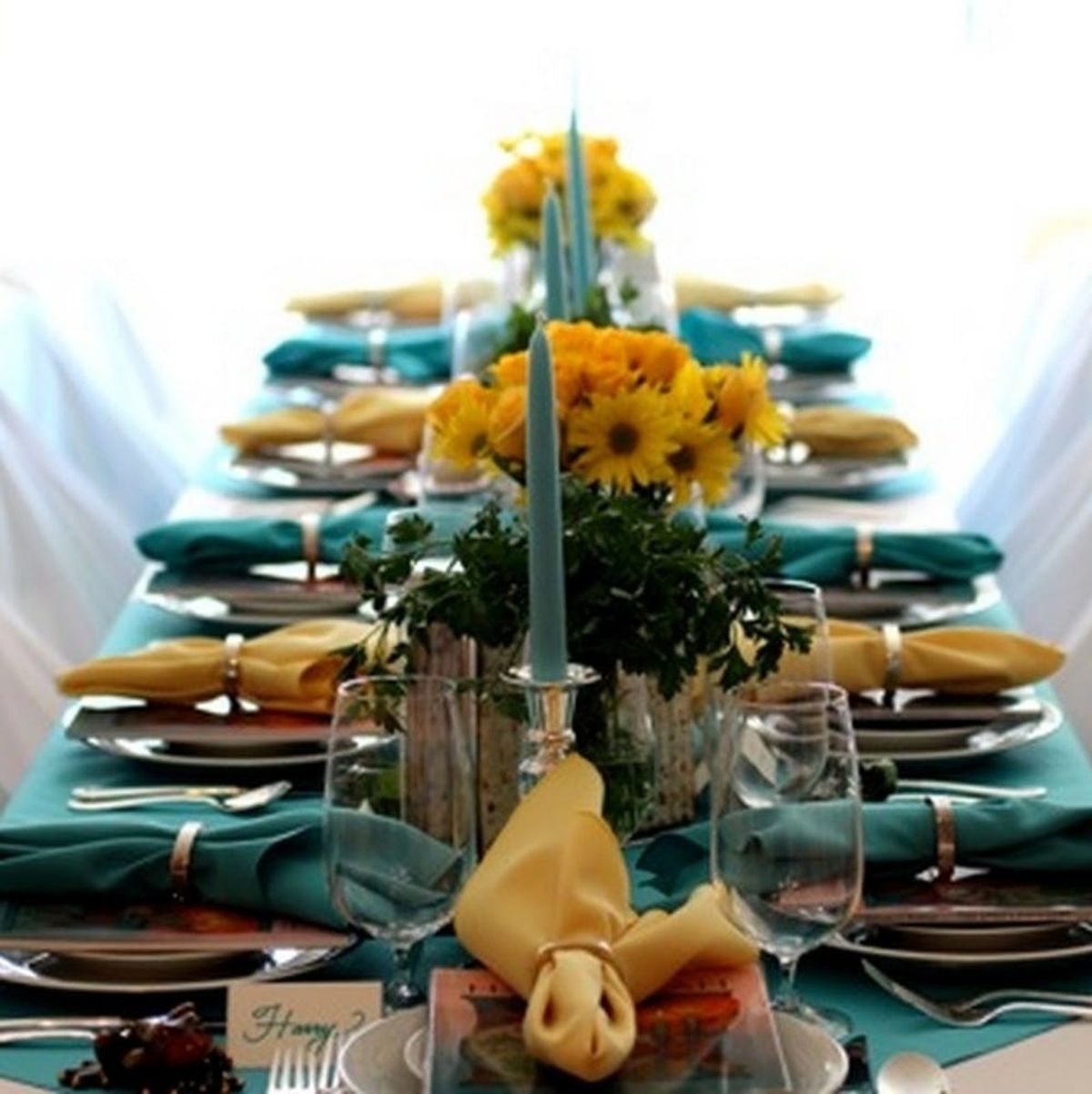How to Plan a Modern Seder Your Friends + Fam Will Love

The snow has melted, the birds are chirping, the buds are blooming… finally, spring is upon us. That means Passover is almost here too (beginning this Friday, people!), and now’s the time to start planning the Seder dinner. Even though Seders are traditional, there are still many ways families are putting modern twists on the feast. With so many steps and so much storytelling, it’s an excellent opportunity to mix old and new traditions that will get everyone involved. We had a chat with Ronya Gordon, the Special Events and Rental Coordinator at the Jewish Museum in New York City, and she’s given us some of her personal party tips for hosting a memorable modern Seder at home.
Understanding the Major Themes of Passover
Many Passover traditions have come and gone over the centuries, but at its heart it always comes down to themes from the Book of Exodus: the history of the people of Israel, liberation and rebirth. For example, the entire family gets involved in the story during the reading of the Haggadah. “Every family does things a bit differently,” says Ronya, “but they agree that engagement of every generation is certainly key.” Salt water and bitter herbs during the Seder symbolize the anguish of slavery. And since rebirth and springtime go hand in hand, Ronya suggests any dishes made with eggs as a simple way to symbolize spring and the circular nature of the year. (Photo via Taste with the Eyes)
Getting the Kids Involved
From songs to reenactments to games, there are so many opportunities for youngins to get involved. “Because the Seder is based on storytelling and asking questions, it is right up every kid’s alley,” says Ronya. The youngest member really gets the ball rolling by singing four questions, called the ma nishtana, which help explain the features of the meal. Of course there is the story of the ten plagues — “What kid doesn’t love a fake locust to leave on their aunt’s dinner plate?” says Ronya. Another kid-friendly tradition is the hunt for the afikoman, a piece of matzah that is hidden at the beginning of the Seder. The meal can’t be finished until it’s found, so Ronya knows lots of children who use that knowledge as leverage for an extra treat ;)
Decorating the Table
Ronya suggests making room for more than one Seder plate if you can, because not only does it display the ritual foods, it can also be a work of art and is a great way of keeping all guests involved. Usually a cup of wine is displayed for the prophet Elijah, but a new tradition in many families is a second cup filled with water for Miriam, Moses’ sister. We love this colorful and kid-friendly DIY for a project the entire family would enjoy. Lastly, don’t forget the flowers, or even edible flowers, for that extra dose of springtime symbolism. (Photo via Tori Avey)
Cooking Up a Kosher Seder for Foodies
“Some classics like matzoh ball soup and brisket are usually best left to Grandma’s recipe,” Ronya concedes, but she says you should definitely get inventive with the rest. Good news for quinoa lovers: It may be a grain, but it’s not chametz, which means it doesn’t rise and can be eaten during Passover. Make sure you find your favorite recipe for charoset, the sweet paste made of apples and sweet wine with nuts or dates — even Ben and Jerry’s has a flavor in Israel! (Photo via The Kitchn)
Attending Your First Seder
Whether you’re hosting non-practicing guests or you’ve been invited to your very first Passover dinner, Ronya says there’s no need to worry: “Because the Seder is all about asking questions and discussing pretty universal ideas of slavery, freedom and continuity, there are a lot of ways to engage people who are not familiar with the structure. See an unfamiliar food? Ask! Don’t understand why people are dipping their pinky in their wine glass and making dots along the side of their plate? Find out!” Oh, and don’t feel the need to bring any food at all, especially not cake or bread.
Starting Your Own Traditions
For some families, Seder means reading from the full Haggadah in Hebrew, while others may pick and choose their favorite passages in the English translations. Some editions of the Haggadah include prayers for remembering the Holocaust, and others encourage kids to relate the story of the Israelites to their modern lives. But overall, Ronya reminds us that the dinner is mainly a celebration. “It’s a holiday where a lot of families and friends will gather together for a meal, which usually leads to a lot of joy and a general sense of togetherness. Everyone has different ideas of what’s important. When something works well, it quickly becomes a family tradition.”
What are your Seder traditions? Share your family’s favorites, then be sure to check out the Jewish Museum’s upcoming Passover events!



















